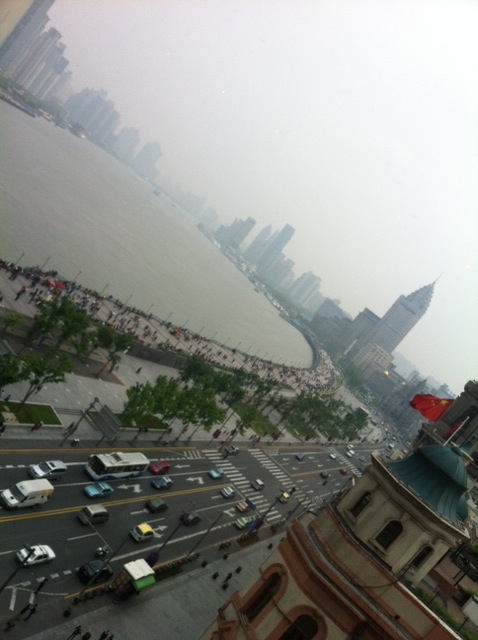
I have been in Shanghai (photo) for a few days to visit a friend, wine writer John Isacs, as well as a few distributors such as ASC. And they were all discussing the effects of fake wines on the market – particularly with high end Bordeaux such as Château Lafite-Rothschild.
This is damaging Lafite’s image, which is perhaps why prices for the great Pauillac are in a downturn. Some vintages of Lafite are trading at prices 40 percent less than in the last three months, according to figures from Liv-ex, the London-based fine wine trading platform.
Most of the Lafite and the second wine of the famous first growth – Carruades de Lafite – are drunk in China at private events with government officials and high wealth individuals. It makes a great impression drinking a first growth with someone in China, giving “face” to the importance of someone. And, of course, it’s a great wine.
But apparently many times the wine is not what is supposed to be. And honestly I think that a lot of the people who serve these fakes know it. It’s the same with any fake luxury product, whether a Hermes hand bag or a Cohiba cigar. If you buy a Rolex watch for a couple hundred dollars from someone, you know it’s not real.
This only makes provenance even more important in the fine wine game in China. And it’s why Asians pay a premium for top Bordeaux direct from the cellars of châteaux. They know the wine is real and they know it has been stored properly when it comes from a wine property.
I notice a lot of older vintages of fine Bordeaux in China have strip labels from US importers – meaning they most likely came from stateside cellars and they were shipped to Asia. God knows how they have been stored or where they came from.
Château Latour’s announcement to end futures sales of wine with the 2012 vintage could help this provenance issue as well as authenticity. The château is taking better control of its distribution and it is offering a better service to consumers – albeit wealthy ones who can afford such an expensive wine. But they should do this considering the prices.
It’s all a bit daunting to think about the sea of fake top growth Bordeaux out there. A wine merchant friend said that one Chinese province consumed more Lafite in a year than what was officially imported into China. And why do you think the second wines of the top growths of Bordeaux are so popular? Could they be relabeled?
Maybe not?
Apparently most fakes or clones of top growth Bordeaux are made with inexpensive regional Bordeaux that sells for about $5 a bottle ex-château. I heard a story of a negociant blend from Bordeaux that went from 5,000 cases a year to 150,000 cases and none of the wines can be found in the Chinese market as they were labeled.
It’s a part of the wine mystery in Mainland China.
I thought about this as I sat back today and had a pleasant lunch and ordered a bottle of Cos d’Estournel white off the list, and the bottle that arrived at the table had nothing to do with the rare white of the famous second growth. I sent it back.
I wonder what sort of impression the bottle would have left if I hadn’t know something about wine, or the real thing?
That’s the big problem. It makes any wine drinker lose confidence.

It is a huge problem in China now. People like me bring a case of mixed wines from my US home cellar to China everytime I travel back to China. I know some Chinese based wine store owners and distributors in China, they told me last year Chinese drank about 1 million bottles of Lafite including second label, the total amout of Lafite imported to China (first label) was around 50000 bottles? If that is true, 95% of the Lafite in China is fake. I lived in a small wealthy city about 1.5 hour drive from Shanghai, I know many wine stores and smaller restaurants there, they all have at least a case of the Carruades de Lafite in stock for their customers. If those are all real, Lafite's production size is > Gallo???
Min Liu